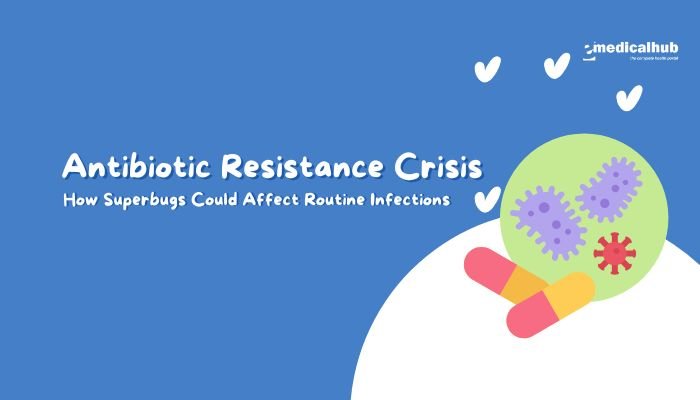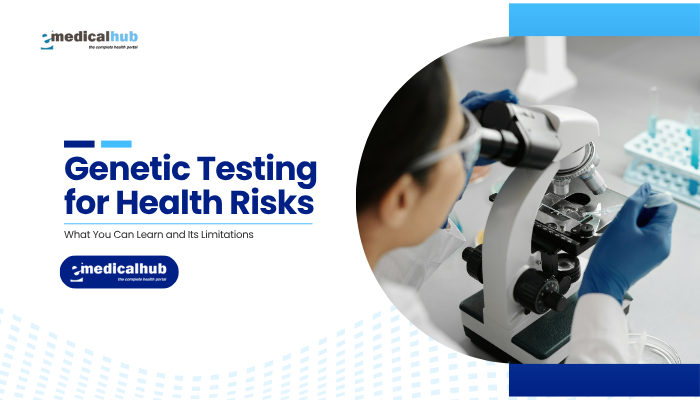Introduction
Over the last few decades, antibiotic resistance—often referred to as the rise of “superbugs”—has developed into one of the most critical global public health threats.
Antibiotics, once the miracle drugs for controlling bacterial infections ranging from strep throat to life-threatening pneumonia, are losing their efficacy as pathogens evolve to outsmart them.
Healthcare professionals warn that unless urgent, coordinated action is taken, diseases once easily treated might become untreatable, leading to a post-antibiotic era reminiscent of pre-20th-century medicine.
This article explores the nature of antibiotic resistance, the mechanisms driving it, and the consequences for routine infections that were once manageable. We also address how individuals, policymakers, and healthcare systems can fight back, from prescribing practices to R&D for new antimicrobials.
Understanding this crisis and acting decisively can help preserve the power of antibiotics for future generations.
Understanding Antibiotic Resistance
What Is Antibiotic Resistance?
- Definition: Antibiotic (or antimicrobial) resistance occurs when bacteria adapt to survive despite exposure to medications intended to kill or inhibit them. Over time, these bacteria proliferate, forming colonies resistant to previously effective treatments.
- Scope: While “antibiotic resistance” focuses on bacteria, “antimicrobial resistance” (AMR) refers to resistance among a broader range of pathogens (e.g., viruses, fungi, parasites). This article mostly addresses bacterial antibiotic resistance.
- Impact: When resistance arises, infections become harder—or impossible—to treat with standard therapies, raising mortality risks, complicating surgeries, and inflating healthcare costs.
Mechanisms of Resistance
- Drug Inactivation: Some bacteria produce enzymes that neutralize or degrade antibiotics (e.g., beta-lactamases that break down penicillins).
- Target Modification: The antibiotic’s site of action in the bacterial cell changes structure, preventing the drug from binding effectively.
- Efflux Pumps: Bacteria develop or upregulate pumps to expel the antibiotic from the cell.
- Reduced Permeability: Changes in cell membrane or wall reduce the antibiotic’s ability to enter.
- Biofilm Formation: Bacteria cluster in matrices that hinder antibiotic penetration.
Key Note: Bacteria can share resistance genes through horizontal gene transfer, amplifying spread across species and accelerating superbug emergence.
Why Antibiotic Resistance Is Rising
Overuse and Misuse of Antibiotics
- Medical Misuse: Prescribing antibiotics for viral illnesses or continuing therapy past the recommended course fosters resistant bacteria.
- Agricultural Use: Many livestock operations use antibiotics for growth promotion or prophylaxis in cramped conditions, fueling resistant strains that can migrate to humans via food or environment.
- Over-The-Counter Access: In some countries, buying antibiotics without prescription or self-medicating fosters misuse.
Lack of New Drug Development
- Scientific Challenges: Identifying new antibiotic targets is more challenging than refining existing classes.
- Economic Disincentives: Antibiotics yield lower returns on investment because they’re used short-term—unlike chronic medications for blood pressure or cholesterol.
- R&D Decline: Many large pharmaceutical companies drastically reduced or ended antibiotic research programs, leaving the pipeline thin.
Globalization and Travel
- Rapid Spread: Resistant strains can move across continents swiftly through humans, animals, or produce.
- Healthcare Disparities: Underfunded systems in low-resource settings might lack robust stewardship or screening, allowing resistant pathogens to flourish.
Environmental Factors
- Pollution: Antibiotic residues in wastewater, agricultural runoff, or pharmaceutical manufacturing sites can select for resistant bacteria in soil or water.
- Co-resistance: The presence of heavy metals or disinfectants can co-select for antibiotic resistance genes, accelerating the phenomenon.
Superbugs: Examples of High Concern
Methicillin-Resistant Staphylococcus aureus (MRSA)
- Background: Staph aureus, typically found on the skin/nose, can cause infections if it enters the body. MRSA strains resist methicillin and related penicillins, complicating hospital and community infections.
- Transmission: Direct contact with infected wounds or surfaces.
- Clinical Significance: Ranges from minor skin infections (boils) to severe pneumonia or bloodstream infections.
Carbapenem-Resistant Enterobacteriaceae (CRE)
- Types: Includes Klebsiella pneumoniae, E. coli, or other Enterobacter species that resist carbapenems, considered last-resort antibiotics.
- Mortality: Potentially up to 50% in invasive infections, especially in hospitalized or immunocompromised patients.
- Healthcare-Associated: CRE typically surfaces in long-term care facilities or ICUs.
Extended-Spectrum Beta-Lactamases (ESBLs)
- Mechanism: Beta-lactamases that degrade extended-spectrum cephalosporins (ceftriaxone, ceftazidime).
- Organisms: Often found in E. coli or Klebsiella species, with increasingly common community-acquired infections.
- Implication: Limits the arsenal of typical outpatient antibiotics for UTIs or other routine infections.
Vancomycin-Resistant Enterococcus (VRE)
- Context: Enterococci in the gut can become resistant to vancomycin, making hospital-acquired infections, especially bloodstream or surgical site infections, tough to treat.
- Patients at Risk: Those with prolonged hospital stays, antibiotic use, or compromised immunity.
How Superbugs Affect Routine Infections
Urinary Tract Infections (UTIs)
- Common Pathogens: E. coli is the main cause, but resistant strains (e.g., ESBL-producing) can make standard antibiotics (like cephalosporins) ineffective.
- Consequences: Patients may require intravenous or more toxic antibiotics; mild UTIs can escalate to severe kidney infections or sepsis.
Skin and Soft Tissue Infections
- MRSA: Minor cuts or abrasions can turn into severe abscesses if MRSA is involved.
- Community Spread: Gyms, dorms, or sports teams see higher MRSA incidence, leading to complicated skin infections if not recognized early.
Pneumonia
- Drug-Resistant Bacteria: Streptococcus pneumoniae with penicillin resistance or MRSA pneumonia can hamper typical outpatient therapies.
- Hospitalization: Infections that used to respond to oral antibiotics might now need advanced intravenous regimens.
Surgeries and Procedures
- Surgical Site Infections: If prophylactic antibiotics fail due to resistant organisms, post-surgical infections become more common and severe.
- Transplants and Chemo: Immunosuppressed patients face higher risk for resistant pathogens, complicating an already delicate treatment journey.
Key Takeaway: What once were quick fixes (e.g., a course of penicillin for strep throat) might escalate, requiring stronger or multiple antibiotics, longer hospital stays, and heightened cost.
Combating Antibiotic Resistance: Stewardship and Innovation
Antibiotic Stewardship Programs
- Rational Prescribing: Using antibiotics only when clearly indicated, choosing the correct agent, dose, and duration.
- Diagnostic Tools: Rapid testing to confirm bacterial vs. viral infections helps avoid unnecessary antibiotic exposure.
- Surveillance: Tracking local resistance patterns so clinicians choose effective empiric treatments.
Reducing Agricultural Overuse
- Legislation: Restricting non-therapeutic antibiotic use in livestock to prevent prophylactic misuse.
- Alternatives: Improved husbandry, vaccination of animals, and using antibiotics under veterinary supervision only when essential.
Incentivizing New Drug R&D
- Push and Pull Funding: Government grants, priority review vouchers, or market entry rewards to encourage pharma to develop novel antibiotics.
- Collaboration: Partnerships (e.g., CARB-X, GARDP) that combine resources from public, private, philanthropic sectors.
- Diagnostic Developments: Rapid, point-of-care tests for targeted antibiotic selection can also preserve new antibiotic efficacy.
Public Awareness and Behavior Change
- Consumer Education: Urging people not to demand antibiotics for viral infections, or to complete full antibiotic courses when prescribed.
- Infection Prevention: Emphasizing handwashing, vaccination, and safe food handling to reduce infection incidence and overall antibiotic demand.
Proper Use of Antibiotics and Home Care
Follow Prescriptions Exactly
- Full Course: Stopping antibiotics prematurely can allow partially resistant bacteria to survive and flourish.
- Avoid Sharing: Each antibiotic is tailored to a specific infection. Using leftovers or someone else’s prescription can be dangerous.
Supportive Measures
- Nutrition and Hydration: Helps the body’s immune response.
- Rest: Adequate sleep and minimal stress can assist recovery from infection.
- Monitoring: If symptoms persist or worsen, re-evaluation is necessary; the antibiotic might be ineffective if the pathogen is resistant.
Non-Antibiotic Relief
- Viral Infections: Colds, flu, or mild respiratory viruses do not benefit from antibiotics. Using them fosters resistance. Rely on rest, hydration, and over-the-counter symptom relievers instead.
Hospital and Community-Level Interventions
Infection Control in Hospitals
- Hand Hygiene: Healthcare workers must follow strict protocols to avoid cross-transmission of drug-resistant organisms.
- Isolation of Infected Patients: MRSA or VRE patients might need contact isolation.
- Surveillance Cultures: Checking high-risk wards (ICU) for resistant strains can guide targeted prevention steps.
Community Clinics and Education
- Urgent Care and GP Practices: Implement stewardship guidelines, ensuring antibiotics are not reflexively prescribed
- Immunizations: Vaccines for bacterial infections (like pneumococcal or Haemophilus influenzae type b) reduce disease burden, indirectly preserving antibiotic effectiveness.
- Safe Water and Sanitation: In many regions, improving sanitation cuts down on waterborne infections that drive antibiotic use.
Policy and Regulation
- Global Coordination: WHO’s Global Action Plan on AMR calls for each country to develop a national AMR strategy.
- Monitoring Supply Chains: Ensuring consistent access to essential antibiotics to avoid suboptimal or poor-quality drugs that spur resistance.
- Sanctioning Overuse: Some governments regulate antibiotic dispensation strictly through licensed pharmacies/doctors.
The Role of Vaccines in Reducing Antibiotic Demand
Bacterial Vaccines
- Pneumococcal, H. influenzae: Reduces incidence of pneumonia, meningitis, thus lowering antibiotic usage.
- Future Developments: Vaccines targeting E. coli or staphylococcal infections are under research, potentially diminishing antibiotic dependence for UTIs or skin infections.
Viral Vaccines Indirect Benefit
- Flu Vaccine: Fewer influenza infections translate to fewer secondary bacterial complications (like pneumonia) and less antibiotic prescribing.
- COVID-19 Vaccines: Similarly help reduce antibiotic over-prescription for mild to moderate COVID-19.
Cross-Protective Impact
- Breaking Transmission Cycles: By preventing key pathogens, overall antibiotic usage can plummet, preserving antibiotic effectiveness for future bacterial threats.
Global Action and Future Outlook
International Collaboration
- One Health Approach: Recognizes the interconnection between people, animals, and environment. Coordinating policies across human, veterinary, and environmental fields is crucial to controlling AMR.
- Surveillance Networks: Shared data on resistant strains guides timely interventions to quell emerging resistance hotspots.
New Drug Prospects
- Novel Classes: Some new antibiotics with fresh mechanisms (e.g., targeting bacterial metabolism differently) are in advanced clinical trials.
- Adjunctive Therapies: Use of phage therapy, immunomodulators, or anti-virulence strategies might complement antibiotic regimens, reducing the chance for resistance to develop.
Behavior Change is Key
- Sustained Effort: Halting antibiotic overuse and investing in next-gen solutions demands persistent commitment from all sectors—public, private, individual.
Conclusion: The antibiotic resistance crisis is accelerating, threatening even routine infections that once were easily managed. But it’s not an unsolvable problem. Through strategic antibiotic stewardship, robust vaccination programs, innovative drug R&D, and a collective shift in attitudes towards antibiotic usage, we can maintain effective therapies for generations to come.
Frequently Asked Questions (FAQ)
- Can we fully reverse antibiotic resistance trends?
- While it’s challenging, we can slow or partially reverse some resistances via stewardship, reduced use, and new discoveries. But lost efficacy for certain classes may be permanent in the short term.
- Do I need antibiotics for a sore throat?
- Usually not, unless caused by a confirmed bacterial pathogen like strep. Many sore throats are viral and resolve on their own.
- How can I protect myself from antibiotic-resistant infections?
- Good hygiene, staying up-to-date on vaccines, only using antibiotics when prescribed, and completing the full course are key measures.
- What about antibiotic residues in meat?
- Countries have regulations, but compliance varies. Proper cooking kills bacteria, but the bigger concern is fostering resistant strains on farms. This underscores the need for responsible antibiotic use in agriculture.
- Is antibiotic development dead?
- Not dead, but significantly slowed. Incentives and novel research approaches are trying to reinvigorate the pipeline.
- Which antibiotic is the strongest?
- “Strength” depends on the pathogen. Some last-resort classes (e.g., carbapenems, colistin) handle multi-drug-resistant organisms but can have toxicity or limited availability.
- Will phage therapy be widely available soon?
- Phage therapy shows promise, especially for specific resistant infections, but large-scale regulatory approval is still evolving. More clinical data is required.
References
- World Health Organization. Global action plan on antimicrobial resistance. Geneva: WHO; 2015.
- Centers for Disease Control and Prevention (CDC). Antibiotic resistance threats in the United States. 2019.
- O’Neill J. Tackling drug-resistant infections globally: Final report and recommendations. 2016.
- World Organization for Animal Health. Responsible use of antimicrobials in veterinary practice. 2020.
- Review on Antimicrobial Resistance (UK). Antimicrobials in agriculture and the environment: Reducing unnecessary use. 2015.
- Ventola CL. The antibiotic resistance crisis. Pharm Ther. 2015;40(4):277-283.
- Gelband H, Miller-Petrie M, Pant S, et al. The state of the world’s antibiotics. Wound Health Glob. 2015;4(2):123-131.
- Spellberg B, Powers JH, Brass EP, et al. Trends in antimicrobial drug development: implications for the future. Clin Infect Dis. 2004;38(9):1279-1286.
- Laxminarayan R, Matsoso P, Pant S, et al. Access to effective antimicrobials: a worldwide challenge. Lancet. 2016;387(10014):168-175.
- Holmes AH, Moore LS, Sundsfjord A, et al. Understanding the mechanisms and drivers of antimicrobial resistance. Lancet. 2016;387(10014):176-187.
- MacGowan A, Macnaughton E. Antibiotic resistance. Medicine (Baltimore). 2017;45(10):622-628.
- Malhotra R, et al. Economic burden of antibiotic overuse and misuse. J Glob Health. 2020;10(2):020306.
- Kollef MH, Bassetti M, Tkacikova L, et al. New antibiotic options and perspectives in the era of antimicrobial resistance. Curr Opin Infect Dis. 2023;36(2):173-181.
- Bal AM, Gould IM. Antibiotic stewardship: overcoming implementation barriers. Curr Opin Infect Dis. 2011;24(4):357-362.



